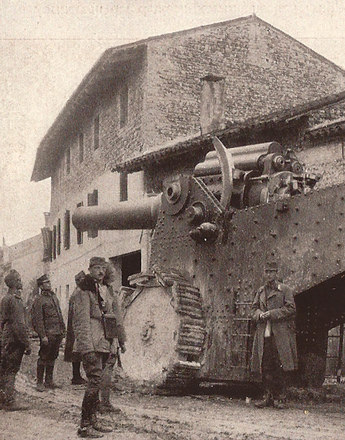During the First World War, the interaction of public debt, increasing money in circulation and a considerable rise in demand for armaments, together with the shortage of food supplies, rapidly led to inflation.
The inflationary tendencies were first apparent in the field of armaments and food, but by the end of the 1914 inflation had spread to practically all sectors of the national economy as a result of wartime full employment and the increased exploitation of production capacity. Price increases were easier as a result of the relatively late introduction of price controls.
It is obvious that the rapid increase of the quantity of money necessarily led to inflation. However, that the phenomenon of war inflation cannot be explained by a mechanistic unilinear interpretation is shown by the comparison between the increase in money and price rises. In several periods, the rises in prices were greater than the expansion of the quantity of money. In others, for instance in the second half of 1917, it was precisely the reverse. (For the rate of inflation, use is made of the official price index excluding costs for housing, since this maps the price increases more accurately; the rents for small apartments were largely frozen in 1917 for the duration of the war.)
Overall, prices were only able to increase so much because the spending power that resulted from the increased quantity of money was converted into a genuine price increase as a result of the strong boost in demand combined with a simultaneous shortage of goods available. Inflation was higher in Austria than in most other countries at war. Between 1914 and 1918, wholesale prices doubled in the German Reich, in Great Britain and the USA; in France they rose by a factor of three, in Italy by a factor of four. For Austria (in the sense of Cisleithania), no reliable wholesale price index is available, but it can be assumed that the rate of increase was greater than in Italy.
The deeper causes of Austria's particular susceptibility to inflation are, alongside the lack of price controls, to be found in the low productivity in industry. A modern industrial war means considerable consumption of the economic substance by means of which the funds that in “normal” times would have been used for investments have to be used to finance the war, i.e. for an alternative form of consumption. Thus a considerable percentage of the national income was “frittered away”. The investments made were entirely in the armaments sector.
Translation: David Wright
März, Eduard: Österreichische Bankpolitik in der Zeit der großen Wende 1913–1923, Wien 1981
Suppanz, Christian: Die österreichische Inflation 1918–1922 (Forschungsbericht Nr. 111 des Instituts für Höhere Studien), Wien November 1976
-
Chapters
- Raising the costs of the war
- War-related inflation in Austria
- The mechanism of financing the war
- Extent, causes and effects of inflation 1914 to 1918
- The losers under inflation: huge falls in employee real wages
- Discharge of debts through inflation
- The financial consequences of the war for the new republic





